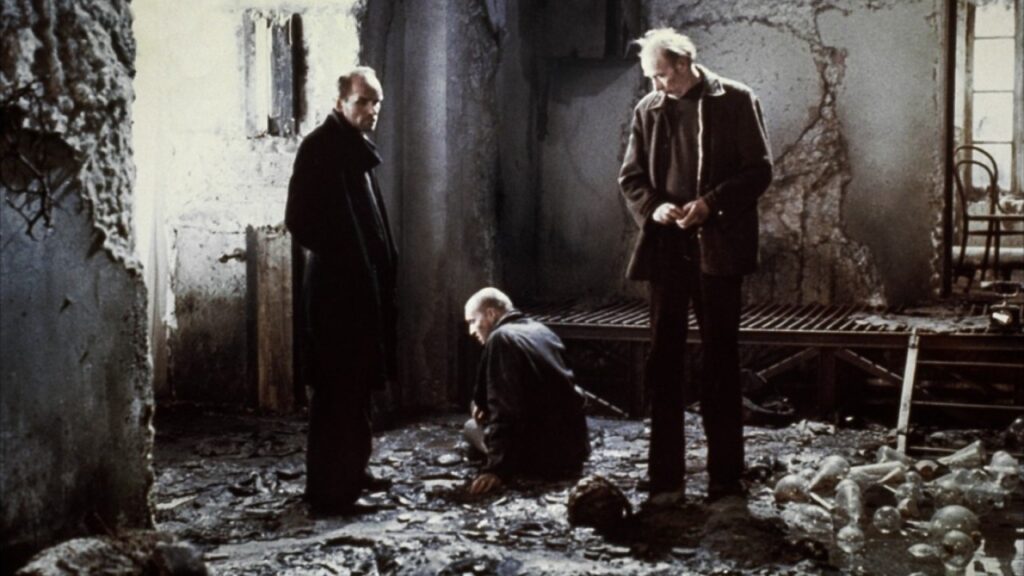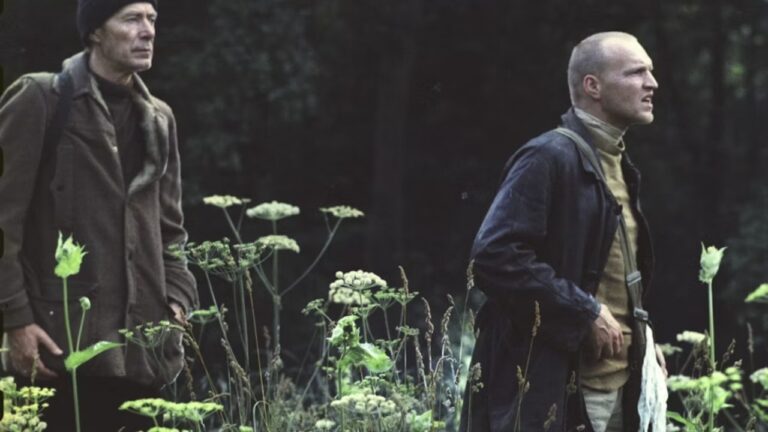Andrei Tarkovsky’s ‘Stalker‘ is a film that asks us to pay attention and to think. Shot in 1978 and released in 1979, it tells the story of a man known as the Stalker who guides two clients, the Writer and the Professor, through a dangerous and mysterious place called the Zone to reach a Room that is said to grant a person’s deepest desire. The story is set in a world where nothing is quite as it seems, and where the land itself seems to watch and judge those who enter it.
The Zone is a strange place where the ordinary rules do not always apply. There are ruins and remnants of unexplained activity that can be deadly. As we follow the Stalker, we see that the Zone is not simply a location, but something alive in the way it responds to those who walk through it. We notice the rustling of grass, the light reflecting on water, and even small sounds like the scrape of a chair. Every detail matters because it shows us the care, caution, and respect needed to survive in this place.
The Zone Shows Us the Choices We Cannot Escape

The journey to the Room is as much about the inner life of the characters as it is about the physical journey. The Writer is worried about losing his inspiration, the Professor is curious and ambitious, and the Stalker wants to help those who are willing to face themselves. As we move with them through the Zone, we see that danger is not only physical.
The Room is said to grant wishes, but in fact, it reflects what is truly inside a person’s heart. The Stalker’s mentor, for example, sought wealth and was destroyed when the Room revealed the truth about his own values. We see that desire is never simple because it is tied to conscience, to selfishness, and to how well we know ourselves.
The moment they reach the Room is full of tension. The three men hesitate because they are faced with the truth of their own desires. The Professor, who brought a bomb to destroy the Room, changes his mind. None of them goes inside, and we are left with the understanding that the most important part of the journey is not reaching the Room but confronting ourselves. The film shows us that our intentions and choices matter more than the things we hope to gain.
Tarkovsky uses sound and images in a way that draws us in. Beethoven’s Ninth Symphony plays at moments, and small sounds of wind, water, and movement give us a sense of being in the Zone. The long takes allow us to see what the characters see, to feel what they feel, and to notice the world around them. The Zone seems to hold both danger and possibility because it challenges the characters and shows us the fragile nature of human life.
Facing Hidden Desires and the Quiet Power of Life

At the end of the film, the Stalker returns to his apartment with his wife and daughter. Life continues as it always has, but we see that the Zone’s influence remains. His daughter seems to have a small, unexplained power, showing that there are mysteries in the world that we may not understand. We leave the film thinking about how we face our own desires and choices, and what it means to be honest with ourselves.
Stalker is a film that asks us to see what we carry inside us and how our desires shape our actions. It tells a story of a strange and dangerous place, but it is also a story about people, about choices, and about the way we confront what is hidden in our hearts. It reminds us that the journey itself can be as important as the goal, and that how we act along the way defines who we are.




